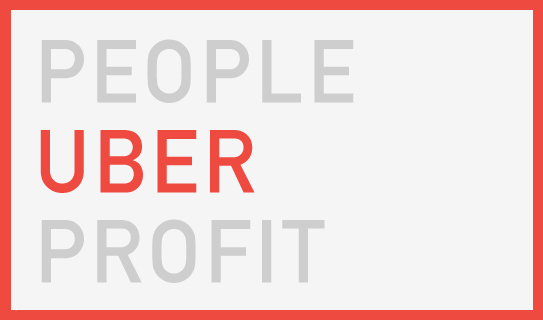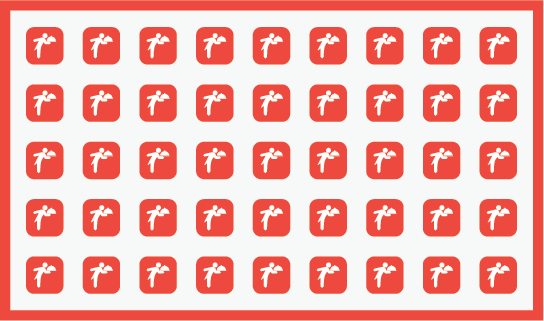Tag Archives: tech startups
How To Avoid Your Uber Brand Mishap
Ride-hailing app Uber had a rough couple of months, to say the least.
I for one have been an über Uber brand advocate from day one and have had a lot of defensive conversations (with cab drivers, my parents, and other naysayers alike) on behalf of the brand I so loved.
Loved, because there is love no more.

The other week, as I was on a flight to Austin to hold one of my many Resonaid brand foundation workshops with a startup, I was contacted by the Los Angeles Times on my thoughts about Uber’s brand troubles. I conducted the interview from the plane, which made me feel uber-productive (and quite special, I must admit), and was greeted by the following ginormous quote in the LA Times later that very same day:
One thing leads to the next and I was interviewed by Canadian TV station CBC the day upon my arrival back in L.A. on the same topic (you can read that story here). Now that I am rather well-versed on the subject of Uber brand bashing (*sigh*), I want us all to understand the one fundamental key branding lesson from their mishap so your startup can avoid following Uber’s path:
Uber came in to disrupt a commodity and monopoly service, the cab industry. Today it may be taking their place and share the same fate with the very companies that used to be the enemy. By focusing solely on the next round of funding and speedy economic growth, the company seems to have left behind what matters the most, what literally drives their business: People.
First, the people who actually make Uber a functional business model, its drivers. Continuously lowering of wages and surpassing employee laws turned into a burden for the early Uber drivers, the ones that actually loved the brand the most, as they are now being forced to leave Uber or work hours that may seem unsafe for drivers and passengers alike.
The effect this has on passengers has been noticeable over the past 6 months: The brand experience of a cool, novel, inexpensive service in nice cars with fun and educated young drivers that cared about making your ride enjoyable changed completely. Today, the only brand attribute left is ‘cheap’ and the Uber brand took a massive hit because of greed and a one-track mind that left the life force of a functioning company behind.
New ride-hailing services that care about more than simply profit (ranging from a company offering female drivers for female riders – to a nonprofit that pays its drivers well) will gain momentum quickly as the Uber brand perception is changing with scandals continuing to hit the mainstream press.
Uber may be getting disrupted by empathy.
The key takeaway for your startup is to never sway away too far from the one key brand rule Uber broke by their single-minded product rather than brand focus:
People first and profit will follow.
The ‘Concierge For The Masses’ Movement And Your Logo: 3 Ways To Partake Instead Of Being Left Unnoticed
Taking an Uber to my meeting I decide to stop on the way for coffee. 5 minutes ahead I use the Starbucks app to place my order. The app knows what I like, so creating my ‘warm’ double-tall-nonfat cappuccino with extra foam is a matter of one single tap. Rinse will swing by tonight to pick up my dry-cleaning for the week. By that time my living room furniture from Greycork should have arrived. All of it. I will assemble it without tools in 4 minutes, just before the dinner ingredients arrive at my door step. It’ll take me 10 minutes to make my farm-to-table dinner with Gobble tonight. My wife will be impressed.

Welcome to today. Slowly we adapt to a new way of doing things, and rather quickly are we getting used to it. Automation is the norm. Tech startups introduced us to what I dub ‘concierge service for the masses’. What used to be a luxury, is now expected. What used to be ‘disruption’, is now advancement.
Today we have very long brand memories of very short brand experiences. Those experiences are being supported by the icon we tapped, the actions we took, and the visual brand language that supported us along the way. Todays’ brands are built on the interaction of experience and flawless design. The first touchpoint more than ever is the logo/icon, which in many cases you simply tap to start your journey with a brand.
How much brand design remains with us after our experience? How much does a logo matter when we swiftly tap and move on? Here are 3 tips that will assist you when contemplating your next logo design, or current logo re-design, while keeping today’s consumer behavior up front and center:
1. You Have 8 Seconds To Communicate
Brand identities in today’s age need to focus on, and re-iterate, the essential qualities of a product or service in the simplest way possible while conveying more than ever before. Us humans are becoming more visual. Our attention span has dropped to 8 seconds before getting distracted. Put the two together and your logo turns into a key asset when communicating your overall brand, because it is one brand element users can not opt out of. Oftentimes it presents the only way to opt in.
2. Your Icon Has Its Name For a Reason: It Demands To Be Iconic
Since no one reads the marketing copy that went through twenty iterations to finally make it onto your web site (no one, but you, and perhaps your team since you are paying them for it), it just ends up turning into an annoyance to many users. It’s a road block to get to the images or the video that describe what you are trying to say verbally, in a stimulating visual way. In this visual journey, the logo mark and associated logotype turn into the focal point that is being associated with the brand experience when it comes to apps, and that spills over into our behavioral patterns outside the ‘digital realm.’ The more iconic your mark and typography, the more it’ll differentiate and stick in people’s minds. Today more than ever before, this becomes a do or die for logo designs, or call it an app icon if you will.
3. Make Your Logo Smaller. Even Smaller.
While brand identity designs needed to function at small scale, because they had to be fed through a fax machine in black and white and still be recognizable (hold their shape), yet convey the same meaning as when they were shouting from a billboard, the rules have not changed. The roles have changed: We can now, for the most part, skip the black and white version of your logo design, but your logo will live in the tiniest of social media avatars as well as (quite often) the app store. So small is – still – beautiful; it has to be.
As the consumer comes to expect simplicity and swift completion of tasks in a straight up user interface, we need to look at the creation and usage of a product or service logo in a different way to further evoke and support this experience. With lifestyles changing dramatically, so does our interaction with brands. Now that ‘the concierge service’ movement is turning mainstream, expectations of your brand are changing.
Make your logo your support during this change: A trusted friend that will bend over backwards for you and your followers; it will adjust during stormy weather; it will talk to even the ones that will only give it one second of their time. Most importantly, it will always strive to form a meaningful connection with each and everyone of them. And then when you hit the pillow at night it will keep on working for you while your Fitbit will be busy calculating your sleep pattern.
CATEGORIES: Blog Your Brand Launch: Identity




